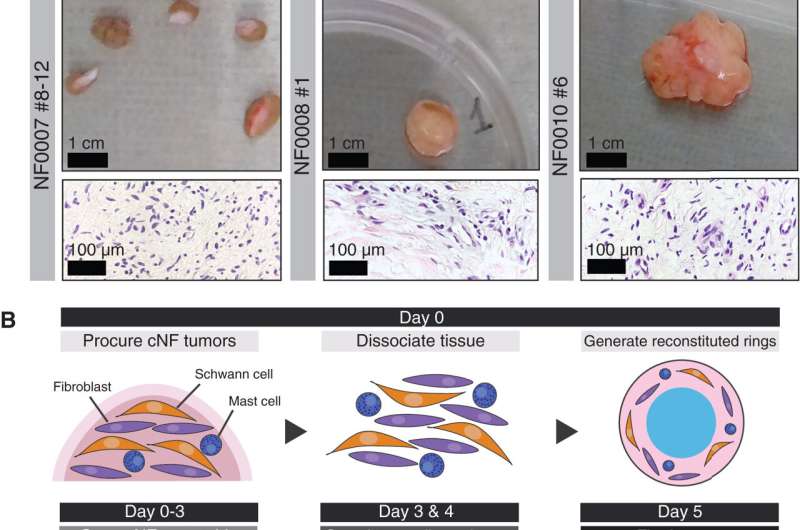This article has been reviewed according to Science X's editorial process and policies. Editors have highlighted the following attributes while ensuring the content's credibility:
fact-checked
peer-reviewed publication
trusted source
proofread
Finding new treatments for genetic tumor-predisposition syndrome

A new report describes a promising approach to studying neurofibromatosis type 1 (NF1), a genetic condition with limited treatment options. The condition causes a number of different cancerous and non-cancerous tumors to form throughout the body. Among these tumors are cutaneous neurofibromas, benign tumors that grow from nerve terminals in the skin.
Current treatment to reduce tumor growth in patients is limited to surgery, which can lead to scarring, re-growth of the tumor and may not be feasible at all when these benign tumors number in the hundreds, or even thousands.
"While benign tumors may not metastasize or spread to other parts of the body, they can still cause substantial health issues, particularly when present in large numbers," said Alice Soragni, an assistant professor in the department of Orthopaedic Surgery at the David Geffen School of Medicine at UCLA and member of the UCLA Health Jonsson Comprehensive Cancer Center.
"Given the paucity of options yet severe comorbidities, there is a need to identify new therapeutic avenues to reduce tumor growth in patients."
The lack of therapies is partly due to the fact that cutaneous neurofibromas are composed of many different cell types and abundant extracellular proteins, making it difficult to model them in the lab to study. To meet these challenges, Soragni and her team has developed a high throughput organoid screening platform to rapidly establish and screen 3D tumor organoids for cutaneous neurofibromas to find drugs that slow tumor growth.
The screening method, described in the journal Cell Reports Methods, uses patients' own tumor cells, collected during surgery, to create miniature patient-derived tumor organoids. The organoids mimic the characteristics of the tumor they originated from.
By optimizing growth conditions, the team was able to establish patient-derived cutaneous neurofibroma organoids from several patients with NF1, and to show how cutaneous neurofibroma organoids recapitulate the critical features of parental tumors. They also implemented their mini-ring high throughput screening platform to find drugs slowing organoid growth.
The team will use these organoid models to find potential treatments by testing FDA approved drugs to identify the most effective regimen.
More information: Huyen Thi Lam Nguyen et al, A platform for rapid patient-derived cutaneous neurofibroma organoid establishment and screening, Cell Reports Methods (2024). DOI: 10.1016/j.crmeth.2024.100772




















